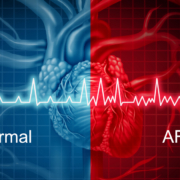Is Red Meat Linked to Type 2 Diabetes?
The next study actually precedes the heme iron paper, not only in time but in size—with close to 2 million subjects! This was an attempt to check on whether red meat, chicken, or processed red meat, such as bacon and sausage, are associated with type 2 diabetes. This was a Herculean task that would never be possible without the type of computers available today; just examining the results of the observational studies alone was amazing.
The researchers used a statistical technique called a federated meta-analysis to test the relationship between meat consumption and type 2 diabetes that allows the nutritional data to be analyzed while preserving the anonymity of the subjects. One of the problems was that the data for meat intake had to be standardized among the 31 countries covering the Americas, Eastern Mediterranean, European, South-East Asia, and Western Pacific.
With 1.9 million adults selected for the study, there were just over 107,000 people diagnosed with type 2 diabetes. The median follow-up time was 10 years. The range of meat consumption in all categories was as little as 0 grams up to 110 grams per day. One thing that surprised me as I looked at the medians was that the European processed meat intake far exceeded that of the U.S.—Americans love their hot dogs and cold cuts and sausage and bacon, but apparently not as much as Europeans do.
They found that eating more of each type of meat increased the diagnosis of type 2 diabetes. The Hazard Ratios were:
- 10% greater risk for each 100 grams of unprocessed red meat
- 15% greater risk for each 50 grams of processed red meat
- Only 8% greater risk for every 100 grams of chicken
The increased risk was found in North America, Europe, and the Western Pacific regions. Repeated covariates such as age, gender, or BMI were tested to explain the differences with other regions, but no clear answers emerged. The conclusion? Eating red meat is a risk factor for developing type 2 diabetes across all populations, and processed meat even more so.
Why Meat?
I often criticize these types of studies because they don’t give any reasons or even guesses as to why the results turned out as they did. They couldn’t explain it but gave one possibility that many people don’t consider: red meat and chicken with skin contains fat, and processed red meat has other chemicals used in processing, but what they have in common is protein. If people aren’t eating enough carbohydrates, they are more likely to make glucose from the amino acid remnants of the protein. That’s why people who claim to eat few carbs and starches will end up with prediabetes and fatty livers. I give the authors credit for that.
The real problem, in my opinion, goes back to data collection: almost all studies used a food frequency questionnaire. That’s the topic I’m going to cover next week.
What are you prepared to do today?
Dr. Chet
Reference: Lancet Diabetes Endocrinol. 2024; 12: 619–30









